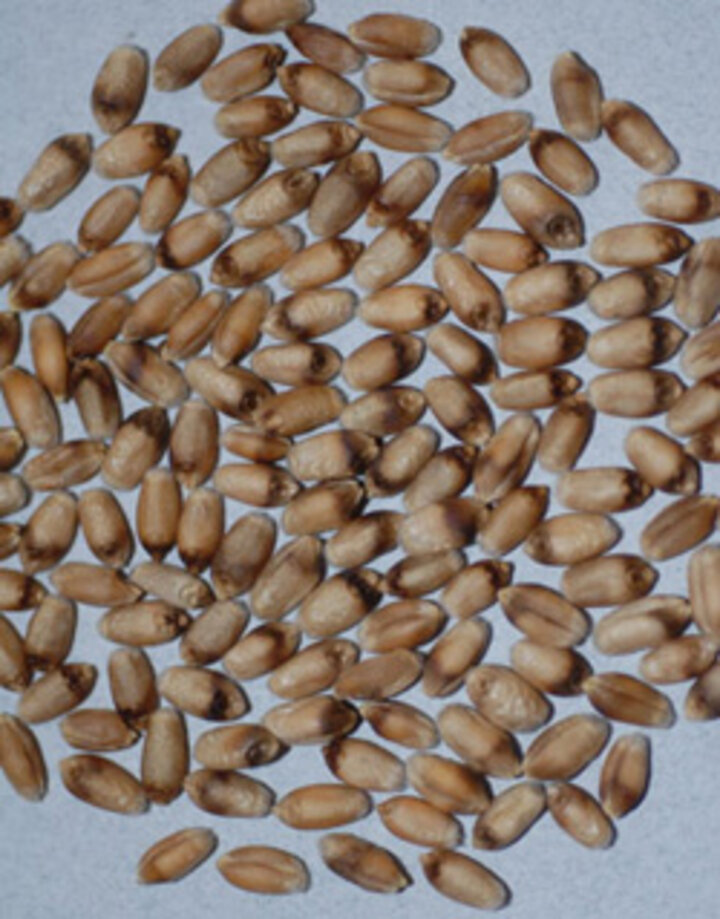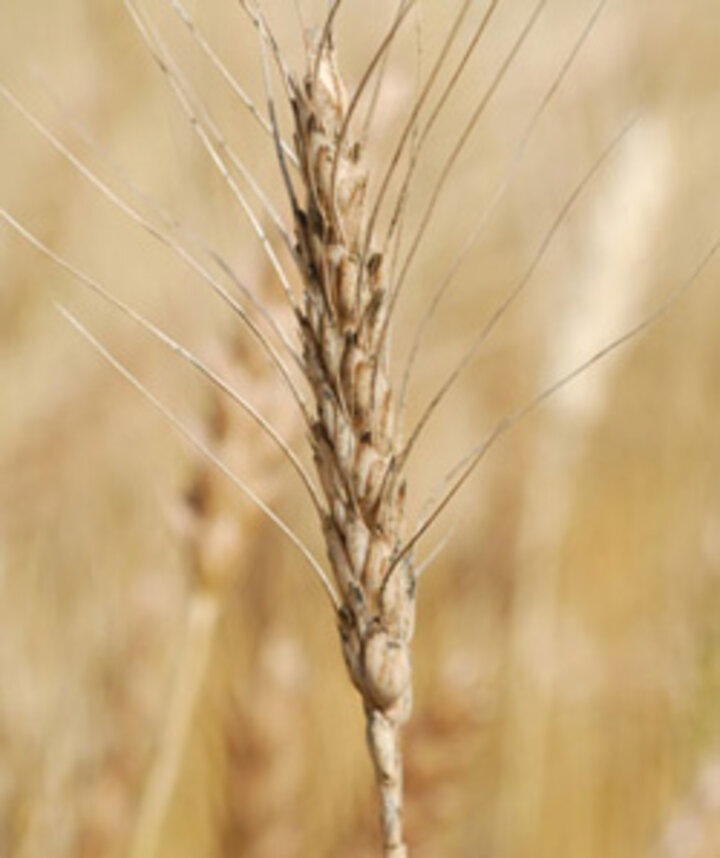August 28, 2009

|
| Figure 1. Black point on kernels. |

|
| Figure 2. Sooty mold, a superficial growth of black, dark green, or even pink or white molds on wheat heads. |
Black point, also known as kernel smudge (Figure 1), is a disease which causes discoloration of the embryo (germ) end and surrounding areas of the wheat kernel. The disease occurs from the grain filling period to harvest and is favored by prolonged wet weather during this period. Rainfall during grain maturation favors growth of several weak pathogenic fungi on wheat heads. The fungi mainly associated with black point are in the genera Alternaria, Bipolaris, and Cladosporium. Alternaria and Cladosporium are also the main cause of sooty mold (Figure 2), a superficial growth of black, dark green, or even pink or white molds on wheat heads.
Excessive rainfall in June coincided with grain maturation in most of Nebraska’s wheat growing areas, favoring the growth of black point-causing fungi on wheat heads. This resulted in higher than normal black point incidence (percentage of affected heads or grain) and prevalence (percentage of affected fields).
Implications of Black Point
Elevators often discount discolored grain because blackened kernels are considered damaged and products made from them can have an undesirable color or odor. Only 2% or 4% of blackened kernels are permitted in wheat graded as U.S. No. 1 or No. 2. Flour milled from black-pointed grain may contain dark specks and fungal compounds on grain can cause illness if affected grain is used as feed or food. In addition, germination of affected grain is lower than that of healthy grain.
Black point usually does not reduce yield during the year the causal fungi invade wheat heads. Lower than expected yields this year, especially in irrigated fields, were more likely caused by other diseases favored by excessive rainfall such as loose smut, leaf rust, tan spot, black chaff, and Fusarium head blight (scab). Other diseases observed that could have contributed to low yields were wheat streak mosaic virus and/or the newly discovered Triticum mosaic virus.
Managing Black Point
It is impossible to exclude saprophytic fungi from maturing wheat heads, but growers can take steps to limit damage:
- Avoiding excessive irrigation can help reduce colonization of wheat heads since moisture is critical to the growth of these fungi. If excessive rainfall occurs in June, as it did this year, little can be done.
- Keep harvested grain at a moisture level of 12% in well ventilated storage to avoid the fungi growing and causing storage molds.
- Avoid using grain from affected fields as seed for next season's crop, especially if disease incidence is high. Otherwise seedling rots and/or blights may occur, resulting in reduced yield. If the grain must be used as seed, treat it with a systemic fungicide before planting. A partial list of seed treatment fungicides are in NebGuide G1671, Management of Residue-Borne Diseases of Wheat.
Stephen Wegulo
Extension Plant Pathologist
